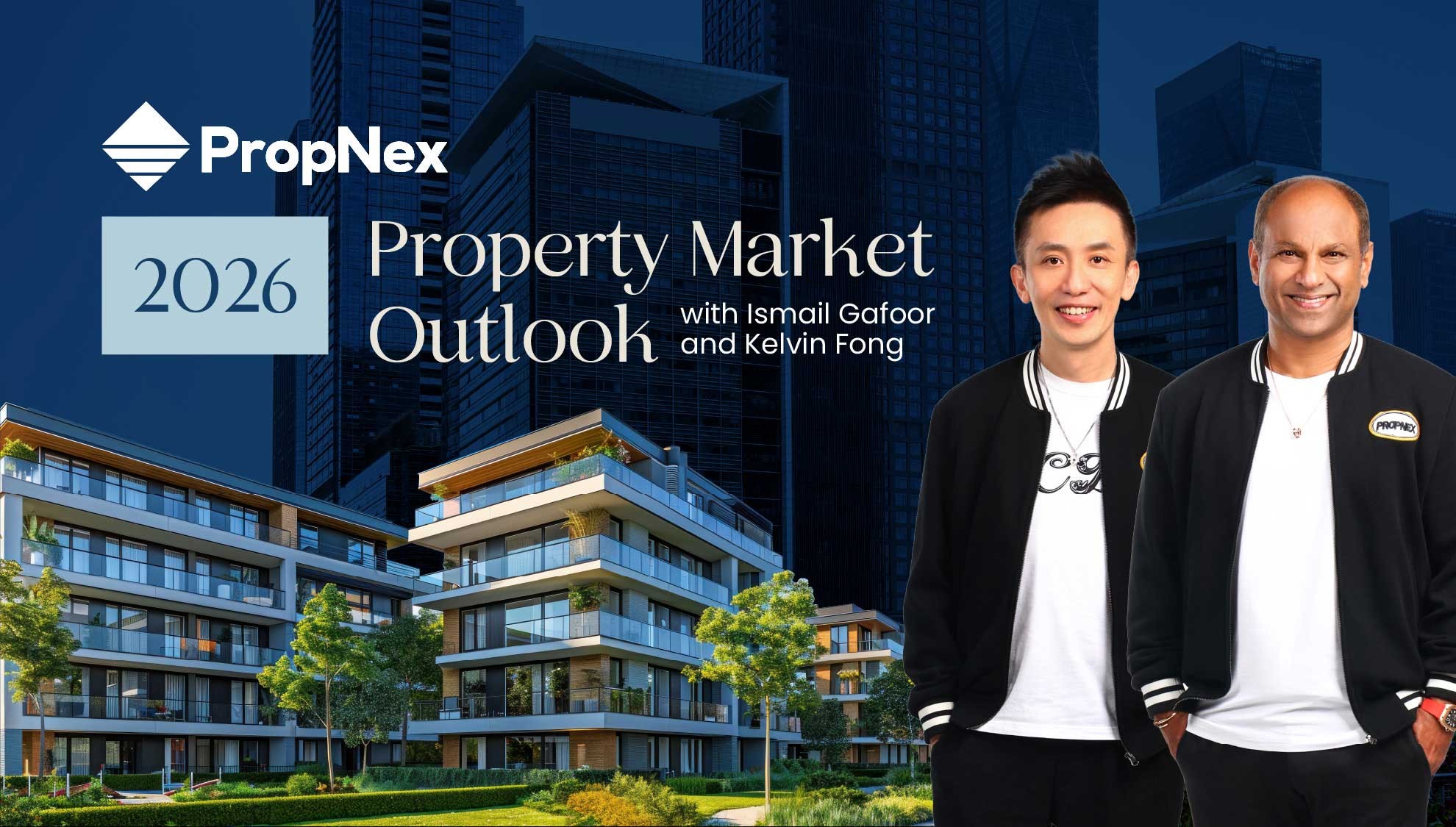What Has Changed A Year On From The ABSD Hike In April 2023?

As with past rounds of property cooling measures, the latest hike in the additional buyer’s stamp duty (ABSD) rates was announced, unexpectedly at close to midnight on 26 April 2023. What took many people by surprise was the drastic increase in the ABSD rate for foreigners purchasing a residential property in Singapore from 30% to 60%. The ABSD rates for Singaporeans and Singapore PRs buying their second and subsequent residential property also went up. This is the fourth revision to the ABSD measure since it was first introduced in December 2011.
Quick recap: What prompted the measures?
The tightening of the ABSD measure (see Table 1) came amidst rising prices and resilient housing demand. In the first quarter of 2023, private residential home prices had grown by 11.4% YOY from a year ago, following an 8.6% increase in private home prices in 2022. The spike in prices and the high interest rate environment had sparked the ABSD hike, as the government sought to encourage financial prudence among buyers, and to keep prices sustainable. One year on, what has been the impact of the higher ABSD rates on the residential property market?
Table 1: Summary of April 2023 ABSD rate revisions
Additional Buyer’s Stamp Duty Rates (ABSD) | Before 27 Apr 2023 | On or After 27 Apr 2023 | |
Singapore Citizens | 1st property | 0% | 0% |
2nd property | 17% | 20% | |
3rd & subsequent property | 25% | 30% | |
Permanent Residents | 1st property | 5% | 5% |
2nd property | 25% | 30% | |
3rd & subsequent property | 30% | 35% | |
Foreigners | Any Residential property | 30% | 60% |
Entities/Trustees | 35% | 65% | |
Housing Developers | 35%* + 5%** | 35%* + 5%** | |
*Housing developers may apply for remission of this ABSD subject to conditions
**This 5% is non-remittable, and is to be paid upfront upon purchase
Fewer foreign buyers, home sales dominated by local market
At the time of writing, private home prices have climbed at a slower pace, and buying demand has cooled, especially amongst foreigners. Unsurprising, in view of the punitive ABSD rate for foreign buyers at 60%. Prior to the April 2023 ABSD hike, there was a general uptrend in the proportion of foreign buyers for overall non-landed private new home sales in 2021 and 2022 (Chart 1), ultimately peaking at 22% in December 2022, based on URA Realis caveat data.
After the cooling measures were implemented at the end of April 2023, the proportion of foreign buyers plummeted – and stayed below 5% for most months, except in September and October 2023. In January 2024, foreigners made up just 1% of the overall non-landed new home sales (ex. EC) – an all-time low on a monthly basis.
By market segments, the cooling measures undoubtedly hit the hardest on the Core Central Region (CCR) and Rest of Central Region (RCR) sub-markets – where there tend to be more foreign buying interest. Notwithstanding some fluctuations, the proportion non-landed private home transactions by foreigners had eased significantly, plunging to a low of 3.7% and 0.9% in the CCR and RCR respectively, in January 2024 (see chart 1).
Chart 1: Proportion of foreign buyers (non-PR) over total buyers (%) of non-landed new sales by region vs overall
Source: PropNex Research, URA Realis
Change in buyer profiles – more American buyers
The proportion and absolute number of foreign buyers (non-PR) who are from the US has outpaced those from China in 2023. US buyers ranked top in 2023, with 208 transactions which accounted for 34% of the total landed and non-landed private residential new sales and resales. Meanwhile, foreign buyers from China posted 185 transactions in 2023, or about 30% of the year’s transactions (see Chart 2A, 3A).
By contrast, it was China that topped the list in 2022 (see Chart 2B, 3B), with 262 foreign buyers (representing 29% of the landed and non-landed new sale and resale private home deals) versus 248 foreign buyers from the US (27%).

Source: PropNex Research, URA Realis
That the US has leapfrogged China in the proportion of foreign home buyers is hardly surprising, in view of free trade agreement arrangements that accord US citizens the same stamp duty treatment as Singaporeans. Four other countries - Switzerland, Norway, Iceland and Lichtenstein - also enjoy a similar treatment under various FTAs. This means that the hike in ABSD for foreigners would have no impact on buyers from these five nations, if they are purchasing their first residential property in Singapore.

Source: PropNex Research, URA Realis
Moderating demand for new private homes in the city centre
The ABSD hike also had an impact on overall sales volume across various segments in the housing market. The sub-market which saw the biggest impact was the CCR which typically draws more interest from foreigners. Based on the URA monthly sales data, an average of 128 new private homes were sold per month in 2023, compared with 215 units and 175 units per month in 2021 and 2022, respectively.
In the first three months of 2024, the average monthly sales for CCR new homes had slumped further to 35 units (see Chart 4). A similar trend was observed for homes in the city fringe or the RCR; new private home sales averaged
Chart 4: CCR new home sales (excl. ECs) and monthly average by year (Jan 2021 – Mar 2024)

Source: PropNex Research, URA
Home prices stabilising
Analysing transactions across regions, the average unit price of new non-landed private homes in the RCR and OCR had risen at a slower pace of 4.8% and 7.6% respectively from April 2023 to April 2024, compared to a year prior – where the price growth was 8% YOY for the RCR and 12.1% YOY for the OCR (see Chart 5).
Meanwhile, CCR new home prices bucked the trend, growing at a faster pace of 12.2% YOY in April 2024, compared to 5.5% YOY in the year before. The price increase is likely due to the pick-up in sales activity at several CCR projects such as Cuscaden Reserve and Watten House. Based on the latest quarterly statistics released by URA, the CCR non-landed property price index expanded by 4.4% YOY in Q1 2024 – compared to the 5.8% YOY growth record in Q1 2023.
Chart 5: Average unit prices ($PSF) of non-landed new homes (excl. ECs) by region by month

Source: PropNex Research, URA Realis (April 2024 data up to 28 April 2024)
The cooling measures, coupled with the still high interest rates seemed to have a more pronounced effect on the resale market. The average unit price for non-landed resale private homes in the CCR inched up by 0.1% YOY in April 2024 – slowing from the 6.6% YOY growth in April 2023. A similar trend of slowing price growth was also observed in the RCR. The pace of price increase held steady at 8.5% YOY in April 2024 in the OCR, supported by transactions at new launches (see Chart 6).
Chart 6: Average unit prices ($PSF) of non-landed resale homes (excl. ECs) by region by month

Source: PropNex Research, URA Realis (April 2024 data up to 28 April 2024)
The latest round of property cooling measures in April 2023 has undoubtedly dealt a substantial impact on the residential property market. With a pullback in transactions by foreigners, private home sales will be largely driven by local buyers, who may be more price-sensitive compared with foreign investors. This, along with the cautious market sentiment and high interest rates will continue to exert influence on home prices in the coming months.
In pricing new projects, developers will likely keep the overall price quantum palatable so as to drive take-up rate at the initial phase of the project launch. In addition, developers appear to be adjusting their land acquisition strategy by submitting more conservative bids in recent public land tenders. This could be due to the tentative home buying interest, rising costs, and new rules on harmonisation of gross floor area definitions.
With the ABSD in place, some aspiring Singaporean investors are considering deploying their funds to buy properties overseas, with the objective of asset diversification or to generate passive income.












